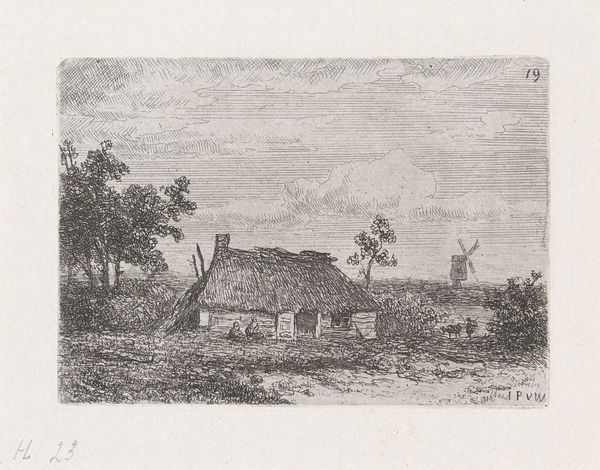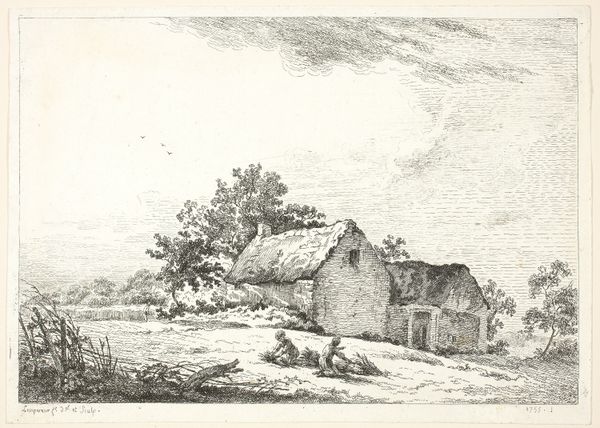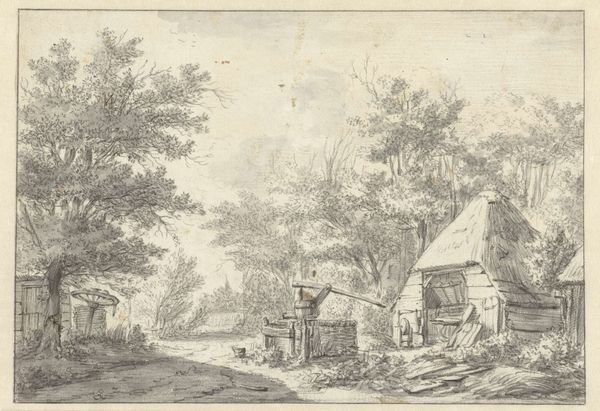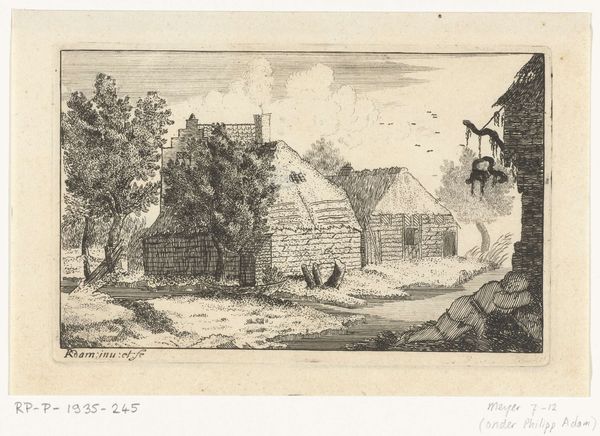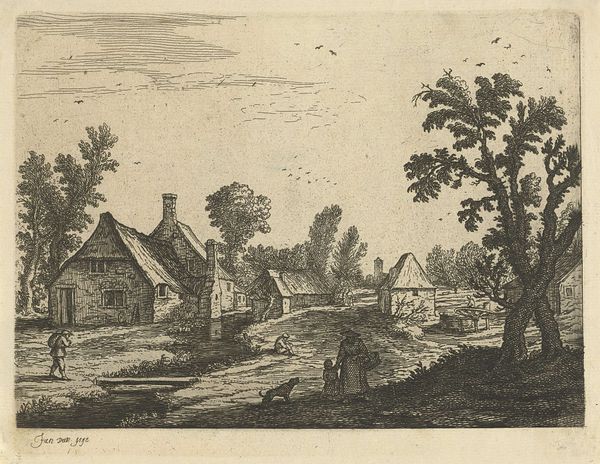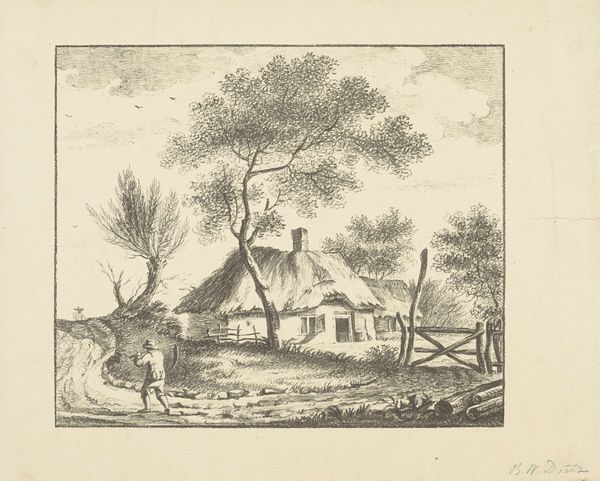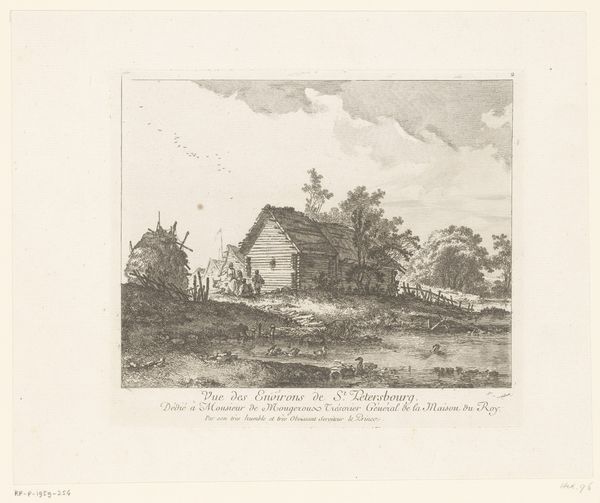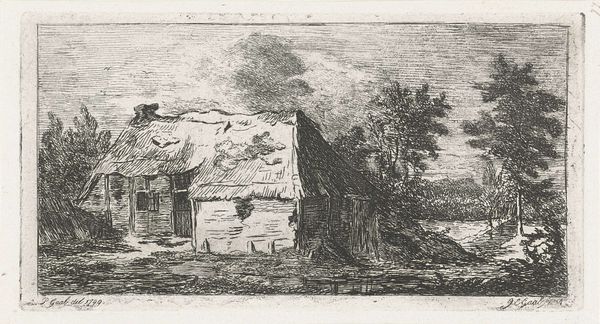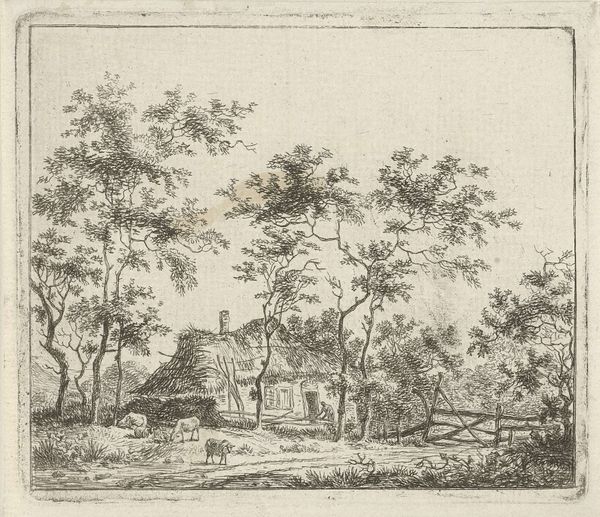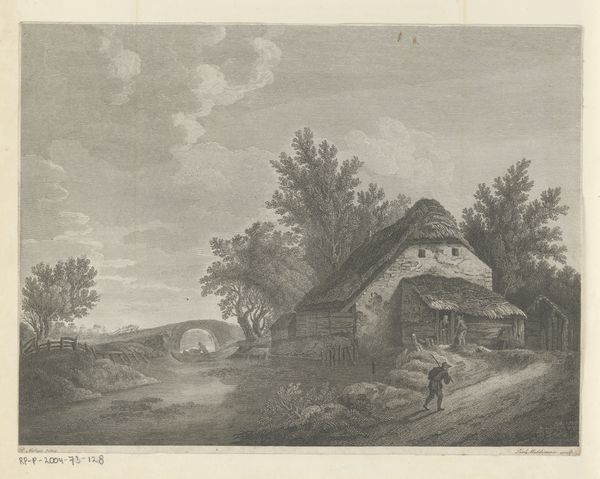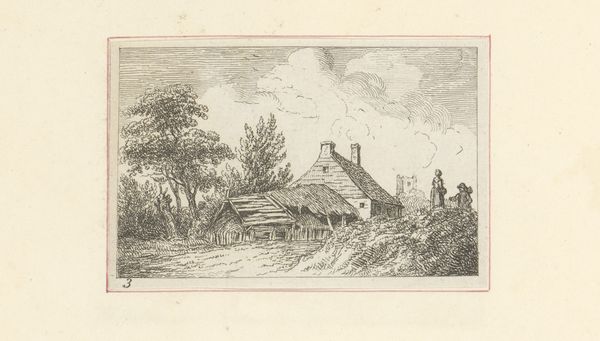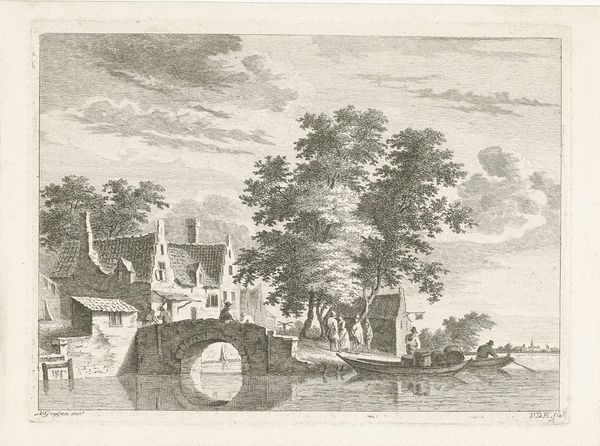
Dimensions: height 131 mm, width 216 mm
Copyright: Rijks Museum: Open Domain
Editor: This is "Verlaten huis en ruiters, bij nacht," or "Abandoned House and Riders, at Night" by J. Kuyper, from 1861. It's an ink and pencil drawing, almost a little sketch, really. There’s something melancholic about the scene... these figures on horseback passing by this dilapidated house. What story do you think Kuyper is trying to tell us here? Curator: That melancholic feeling, I think, stems directly from the social climate of the time. Consider that this was created in 1861, a period of immense social and economic change. The rise of industrialization meant many rural areas faced decline, mirroring perhaps, the neglected state of the house. Editor: So, you're suggesting that this image isn't just a landscape, but a social commentary? Curator: Precisely. Landscape, particularly in the Romantic era of which this is an example, became a vehicle for expressing broader anxieties about societal shifts. The riders, possibly landowners or wealthy merchants, contrast sharply with the decay of the house, highlighting disparities. Editor: It makes me wonder who occupied the house. Was it a depiction of social mobility in that period, that landowners have the resources and others face hardship? Curator: Precisely, that is a valuable perspective. This artwork really provides us insight into that era’s socio-political realities through subtle visual cues. The location and setting serve not just as background but as a statement about society and the anxieties of the era. How does thinking about it this way change your perspective of the artwork? Editor: It transforms it! From a simple drawing, it is now something of a visual document of that moment. Curator: Indeed. It shows how the politics of imagery reflect how public spaces are represented and what that tells us about those who live there and view such an image.
Comments
No comments
Be the first to comment and join the conversation on the ultimate creative platform.
